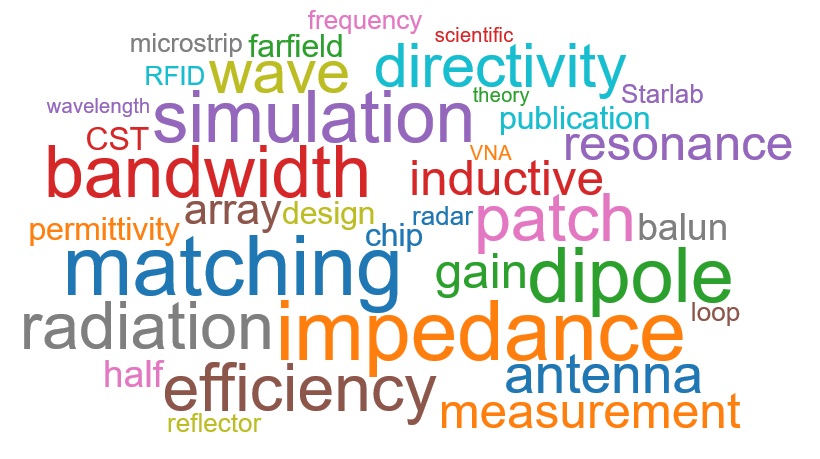
LEARNING OUTCOMES
After successful completion of the course, the student can work in an antenna project on the competent performer level - i.e., the student's working is well-planned and productive, and one can recognize and propose suitable approaches in real-world situations.
The main idea of the course is to educate students for working life, especially to antenna and RF related research and development tasks, and improve their learning-to-learn skills. Students will experience exercises on situations that they may encounter in working life and post-graduate studies. More detailed learning activities are defined are below. The verbs shown in bold describe the activities of the student during the course.
- The student can recognize need for further work and define the next steps of one's working.
- The student can recognize and apply relevant antenna and microwave engineering theories and antenna design tools, such as CAD, in antenna design and problem solving.
- The student has an ability to collect relevant information from scientific literature and is able to critically evaluate and explain the applicability and validity of the found information.
- The student is able to design antennas for a given desired performance in given time and explain relevant design principles.
- The student has a readiness to perform antenna-related measurements. The student can analyze the measurement results, identify possible error sources and estimate the measurement uncertainty.
- The student can effectively cooperate with the other students (or the instructor) and work individually towards the joint goal.
- The student is able to document, present and/or report the experiment procedure and results of the work.
- The student can self-evaluate one's working, learning and know-how.
Credits: 5
Schedule: 06.09.2022 - 09.12.2022
Teacher in charge (valid for whole curriculum period):
Teacher in charge (applies in this implementation): Jari Holopainen, Ville Viikari
Contact information for the course (applies in this implementation):
CEFR level (valid for whole curriculum period):
Language of instruction and studies (applies in this implementation):
Teaching language: English. Languages of study attainment: English
CONTENT, ASSESSMENT AND WORKLOAD
Content
valid for whole curriculum period:
The course consists of two practical antenna design tasks in Periods 1 and 2. In both of the tasks, an antenna is designed based on basic theories with the help of an electromagnetic simulator (CST Studio Suite), manufactured and the performance is evaluated with measurements (e.g., vector network analyser and MVG StarLab). Both the topics culminate with a final seminar where the design task is reviewed and the end evaluation where the achievement of learning outcomes is reflected.
Assessment Methods and Criteria
valid for whole curriculum period:
Antenna design tasks and individual development during the course. The successful completion of the course requires active and regular participation in the teaching sessions. The assessment criteria will be specified at the beginning of the course.
Workload
valid for whole curriculum period:
Interactive teaching sessions 52 h (contact or remote depending on the content, typically 2 x 2 hours per week). Independent working 83 h (average 6 hours per week over the teaching periods). The course also includes working in technical workshop and laboratory premises.
DETAILS
Substitutes for Courses
valid for whole curriculum period:
Prerequisites
valid for whole curriculum period:
FURTHER INFORMATION
Further Information
valid for whole curriculum period:
Teaching Language : English
Teaching Period : 2022-2023 Autumn I - II
2023-2024 Autumn I - IIEnrollment :
Registration for Courses: Registration for courses will take place on Sisu (sisu.aalto.fi). Students must confirm their participation in the first session of the course.
The number of students is limited to 20 and the students will be accepted according to the following priorities: 1. students, who have the course confirmed in microwave engineering major in the study plan, 2. students, who fulfil the prerequisites of the course and have the course confirmed in their major in the study plan, 3. students, who fulfil the prerequisites of the course and have the course confirmed in their minor in the study plan, 4. other students, who fulfil the prerequisites of the course, in the order of enrollment.
